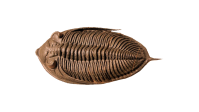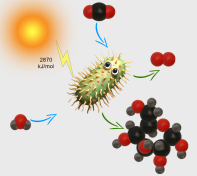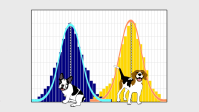12th grade
- Studying Darwin's theory of evolution mechanisms with comic illustrations
- Studying evidence of evolution with infographic illustrations
- Studying directions of selection with animated illustrations
- Interactive Assignment 1: Sorting photos of living organisms by the type of selection that led to their emergence
- Interactive Assignment 2: Determining the direction of selection in the situations described in the text
- Interactive Assignment 3: Ranking the reliability of evidence for evolution
- Interactive Assignment 4: Identifying and sorting organs into analogous, homologous, and vestigial categories
- Assignments 5 and 7: Modeling evolutionary processes using examples of bacteria and humanity
- Assignment 6: Discussion on controversial questions of the theory of evolution
- Break down complex terms like chemoorganoheterotrophy and photolithoautotrophy into clear, understandable ideas
- Compare cellular respiration, photosynthesis, and fermentation at the molecular level
- Explore the differences between oxygenic and anoxygenic photosynthesis
- Examine both aerobic and anaerobic respiration pathways
- Discover unique prokaryotic energy strategies, such as chemolithoautotrophy and methanogenesis
-
Measures of Central Tendency — Understand how to calculate and interpret the mean using practical data examples
-
Student’s t-Test — Learn to compare two sample means, test hypotheses, and interpret results with real data sets
-
Chi-square test — Explore how to analyze categorical data for significant differences, even with unequal sample sizes
-
Pearson and Spearman correlation coefficients — Discover how to measure relationships between variables, including when data are not normally distributed
-
Phi coefficient — Analyze associations in binary (yes/no) outcomes through fun behavioral experiments
-
Cluster analysis — Group and compare complex biological data using distance measures and dendrograms, learning how to identify patterns in multidimensional datasets


